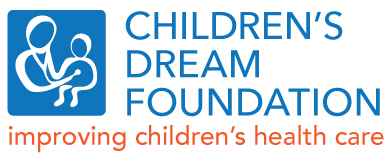 Concussions have been a hot item in the news recently due to the abrupt reversal of the NFL in its approach to the seriousness of the problem. Numerous players have had their seasons interrupted due to concussions and some have even had their careers ended. Even more frightening has been the reports of autopsy findings on NFL players showing signs of serious brain damage. The argument about football as a modern gladiator sport is for another time, but raising concern about head injury is vitally important.
Concussions have been a hot item in the news recently due to the abrupt reversal of the NFL in its approach to the seriousness of the problem. Numerous players have had their seasons interrupted due to concussions and some have even had their careers ended. Even more frightening has been the reports of autopsy findings on NFL players showing signs of serious brain damage. The argument about football as a modern gladiator sport is for another time, but raising concern about head injury is vitally important.
First, it is important to understand the definition. A concussion is a traumatically induced alteration of mental status, with or without loss of consciousness. Some key parts of this definition are that concussions are the result of trauma. It is true that sometimes the trauma isn’t identified, but the lack of any history of hitting the head should raise the concern about other causes of changes in mental status. Also, you do not need to knocked out. It is a common misconception that you need to have loss of consciousness and this myth makes for under appreciation of low grade concussions. Concussions are the most common form of traumatic brain injury (TBI). The true rate is unknown because many concussions happen during unsupervised activities, many concussions are under appreciated, and the lack of knowledge in diagnosing concussions amongst coaches and trainers. There is no absolute medical test that can rule out a concussion. In fact, bleeding in the brain or other abnormalities on imaging studies, such as CT scans or MRIs, indicate a more severe injury, so that there is often no hard evidence of any damage. Many college sports teams now perform baseline neuropsychiatric tests before the season that serve as baseline performance measures for the athletes. When a concussion is suspected, the test is given again. Any result lower than the baseline indicates a brain injury occurred. Parents of high school age or younger children may want to look into getting their child tested as a baseline prior to every season. Other symptoms of a concussion are headache, nausea and vomiting, memory loss, and deficits in higher processing functions such as math or complex social interactions.
The most critical part of making a diagnosis of a concussion is to think that it may have happened. It is easier when loss of consciousness has occurred, but suspicion needs to be high whenever a blow to the head is witnessed or whenever someone complains of any of the possible symptoms. Any suspicion of a concussion should be followed by a rapid assessment of the affected person. There are several standardized assessment tools that combine a brief physical exam and an evaluation of mental status. The best course of action if a concussion is suspected is to remove the person from the activity until a more formal exam can be done. If formal assessment is possible of the sideline and no concussion is diagnosed the person should be reassessed every 15 minutes until symptoms resolve before returning to action. If a concussion is diagnosed, or if a proper assessment cannot be made. The person should be removed from the game and a formal medical exam should be obtained.
There is no treatment for concussions other than time. The symptoms, such as headaches or nausea, can be managed as needed, but ultimately rest will return most people to baseline, usually in a few days, although it is not uncommon for symptoms to last a few weeks after more serious concussions. It is unclear if there are any long-term consequences of a single concussion with most long studies suggesting that complete recovery is typical. Post-concussive syndrome, which is symptoms lasting at least three months, is very uncommon. The greatest danger in long-term damage is getting hit again before the brain has healed. The risk for getting a concussion is higher for those who have been concussed previously and the risk for severe injury is greater the closer together the second concussion happens. Professional athletes in the news have likely had multiple concussions over the course of their careers, making them at increased risk with each subsequent concussion.
Football is certainly a high risk sport for concussions, but any sport where head contact can happen is a potential risk. Other sports to consider are hockey (ice hockey and field hockey), soccer, basketball, wrestling, and cheer leading. Prevention is impossible due to the nature of these sports. Contact is inevitable. Proper head gear is an absolute necessity, but does eliminate the possibility of head injury. Parents and coaches need to be vigilant to suspect a head injury has occurred and take the appropriate steps to assess and protect the affected player. Appreciation of the potential seriousness of head injuries and the proper rest afterwards are the keys to protecting athletes.
By Daniel Rauch, MD, FAAP, FHM, Associate Professor of Pediatrics,
Mount Sinai School of Medicine
